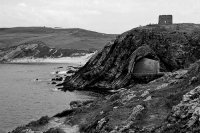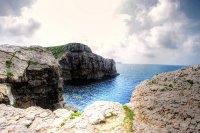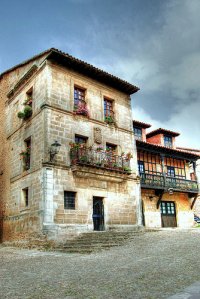Explore Torrelavega in Spain
Torrelavega in the region of Cantabria with its 55,947 inhabitants is a town in Spain - some 203 mi or ( 327 km ) North of Madrid , the country's capital city .
Current time in Torrelavega is now 08:18 AM (Wednesday) . The local timezone is named " Europe/Madrid " with a UTC offset of 1 hours. Depending on the availability of means of transportation, these more prominent locations might be interesting for you: Nantes, Bordeaux, Villafufre, Tanos, and Suances. Since you are here already, make sure to check out Nantes . We encountered some video on the web . Scroll down to see the most favourite one or select the video collection in the navigation. Where to go and what to see in Torrelavega ? We have collected some references on our attractions page.
Videos
Torrelavega
Torrelavega en un paseo por el bulevar, el parque y las calles y plazas del centro. Guía de Cantabria. Qué ver en Cantabria. Un vídeo de Eusebio con música de Javier San Miguel y Macuel Cabaniñas (Moe ..
HOTEL LOS INFANTES SANTILLANA CANTABRIA OFERTA PRIMAVERA.avi
Oferta Hotel Los Infantes en Santillana del Mar, Cantabria ..
SiNBaT - (Belo) Al gallo que me cante
vaya tardecita en Coo city eee gente! menos mal k alli nos dan de todo y nos cuidan como nadie!! vamos ekipo! a pokito!!! ..
A visit of the old Spanish village Santillana (Cantabria, Spain)
This video shows the visit of the old Spanish village Santillana del Mar (near the caves of Altamira, regio Cantabria) on a summer day. ..
Videos provided by Youtube are under the copyright of their owners.
Interesting facts about this location
Cave of Altamira
Altamira (Spanish for 'high views') is a cave in Spain famous for its Upper Paleolithic cave paintings featuring drawings and polychrome rock paintings of wild mammals and human hands. Its special relevance comes from the fact that it was the first cave in which prehistoric cave paintings were discovered.
Located at 43.38 -4.12 (Lat./Long.); Less than 7 km away
Cave of Altamira and Paleolithic Cave Art of Northern Spain
Cave of Altamira and Paleolithic Cave Art of Northern Spain is the name under which are grouped 18 caves located in different regions of northern Spain, which together represent the apogee of Paleolithic cave art in Europe between 35,000 and 11,000 B.C. They have been collectively designated a World Heritage Site.
Located at 43.38 -4.12 (Lat./Long.); Less than 7 km away
National Museum and Research Center of Altamira
The National Museum and Research Center of Altamira (Spanish: Museo Nacional y Centro de Investigación de Altamira) is a center for conservation, research and spreading of the cave of Altamira in Santillana del Mar, named a World Heritage Site by Unesco.
Located at 43.38 -4.12 (Lat./Long.); Less than 7 km away
San Mateo (Cantabria)
San Mateo is a village in the autonomous community of Cantabria, Spain. Situated to the north and its population is 300 people.
Located at 43.27 -4.08 (Lat./Long.); Less than 9 km away
Cave of El Castillo
The Cueva de El Castillo, or the Cave of the Castle, is an archaeological site within the complex of the Caves of Monte Castillo, and is located in Puente Viesgo, in the province of Cantabria, Spain. This cave was discovered in 1903 by Hermilio Alcalde del Río, the Spanish archaeologist, who was one of the pioneers in the study of the earliest cave paintings of Cantabria. The entrance to the cave was smaller in the past, but it has been enlarged as a result of archeological excavations.
Located at 43.29 -3.97 (Lat./Long.); Less than 9 km away
Pictures
Related Locations
Information of geographic nature is based on public data provided by geonames.org, CIA world facts book, Unesco, DBpedia and wikipedia. Weather is based on NOAA GFS.








